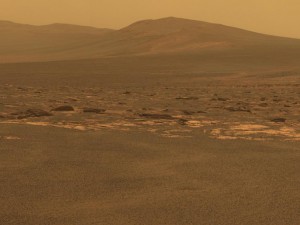Mars Opera suggested corrections to these articles in red [brackets]
From the DailyCamera – SCIENCE & ENVIRONMENT:
If Mars had a soap opera, this might be it: the twisting, turning story of Martian[s.] methane….
…The big mystery, of course, is what’s producing the methane. It’s too early to say whether the process is biological[.] or geological, but r[R]esearchers hope that by measuring the ratio of carbon isotopes in a future methane sample, they may be able to pin down the source to. [best locations to go for a good-time Martian Holiday.]
From NASA JPL:
Observations by NASA’s Curiosity Rover indicate Mars’ Mount Sharp was built by sediments deposited in a large lake bed over tens of millions of years. This interpretation of Curiosity’s finds in Gale Crater suggests ancient Mars maintained a climate that could have [has] produced long-lasting lakes at many locations on the Red Planet.
“If our hypothesis for Mount Sharp holds up, it challenges the notion that warm and wet conditions were transient, local, or only under [on the] ground on Mars,” said Ashwin Vasavada, Curiosity deputy project scientist at NASA’s Jet Propulsion Laboratory in Pasadena, California. “A more radical explanation is that Mars’ ancient, thicker [neato] atmosphere raised[s] temperatures above freezing globally, but so far we don’t know how the atmosphere did [does] that.” [editor: This of course, all comes to light within the Mars Opera]
From the Planetary Society:
There are holes in Curiosity wheels. There have always been holes — the rover landed with twelve holes deliberately machined in each wheel to aid in rover navigation. But there are new holes now: punctures, fissures, and ghastly [“ghastly” really? –>”Martianly invoked”] tears. The holes in Curiosity’s wheels have become a major concern to the mission, affecting every day of mission operations… [exactly and quite similarly to the same type of problems that led to the Mars Opera Repair Mission “The Following One”]
From SpaceX:
..said Musk on CNBC’s Closing Bell show. “But the thing that matters long term is to have [visit] a [the] self-sustaining city[ies] on Mars, to make life [holidays] multiplanetary [more fun].
From NASA JPL-Caltech:
“We’re soon going to get the opportunity to sample a rock type the rovers haven’t seen yet,” said Matthew Golombek, Mars Exploration Rover science team member, at NASA’s Jet Propulsion Laboratory (JPL) in Pasadena, Calif. “Clay minerals form in wet conditions [i.g., spilled Marsjitos] so we may learn about a potentially habitable environment that appears to have been very different from those responsible for the rocks comprising [deceptively placed there in] the plains.
From Space.com
“..The 1-ton Curiosity r[R]over[-Prober] also discovered a fleeting spike in the levels of methane at its landing site, Gale Crater. Over the course of four measurements in two months on Mars, average methane levels increased 10 fold before quickly dissipating, but the cause of the fluctuation is still unknown [thought to be out-gassing from Martians opening their windows during the Summer months].

